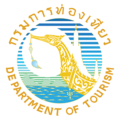Traditional Thai Fishing Villages: Meeting Local Communities by Kayak

As your kayak glides silently through the mangrove channels leading to Koh Panyee, the modern world seems to fade away. Wooden houses on stilts emerge from the morning mist, fishing nets dry in the gentle breeze, and the rhythmic sounds of traditional boat-building echo across the water. This is how visitors should approach Thailand’s traditional fishing villages—quietly, respectfully, and with genuine curiosity about ways of life that have remained largely unchanged for centuries.
For over three decades, Andaman Sea Kayak has been facilitating meaningful encounters between travelers and the traditional fishing communities scattered throughout Phang Nga Bay. These villages, built entirely over water and accessible primarily by boat, offer glimpses into maritime cultures that have thrived in harmony with these waters for generations.
But visiting traditional fishing villages isn’t just sightseeing—it’s cultural exchange that, when done respectfully, benefits both visitors and communities. Through the intimate approach of kayaking, travelers can experience authentic Thai village life while supporting sustainable livelihoods that preserve both cultural heritage and marine environments.

The Maritime Heritage of Phang Nga Bay
Centuries of Sea-Based Living
The traditional fishing villages of Phang Nga Bay represent an unbroken chain of maritime culture dating back over 800 years. These communities developed unique adaptations to life entirely on water, creating sustainable relationships with marine resources that modern conservation efforts strive to emulate.
Historical Development:
- 13th-15th centuries: Early Malay and Sea Gypsy settlements
- 16th-18th centuries: Integration with Thai kingdom and trade networks
- 19th century: Expansion of permanent stilt house villages
- 20th century: Adaptation to modern fishing techniques while maintaining traditional practices
- 21st century: Integration of tourism while preserving cultural authenticity
These villages evolved sophisticated systems for sustainable fishing, community governance, and environmental management that continue to function today.
Three Distinct Cultural Groups
The fishing villages of Phang Nga Bay represent three primary cultural groups, each with distinct traditions, languages, and relationships to the marine environment.
Thai-Buddhist Communities:
- Permanent stilt house villages with Buddhist temples
- Integration of fishing with rice farming on nearby land
- Strong connection to Thai royal patronage and government
- Examples: Koh Panyee, Ban Bang Rong
Sea Gypsy (Chao Leh) Communities:
- Traditional boat-dwelling and recent stilt house settlements
- Animist spiritual practices mixed with Buddhist influences
- Specialized knowledge of marine resources and navigation
- Examples: Koh Floating communities, Rawai Sea Gypsy villages
Chinese-Thai Fishing Families:
- Commercial fishing operations with strong family networks
- Integration of Chinese business practices with Thai culture
- Specialization in specific fishing techniques and markets
- Examples: Various family-based operations throughout the bay
Each group offers different perspectives on traditional maritime life and sustainable resource management.
Koh Panyee: The Famous Floating Village
A Community Built on Water
Koh Panyee, perhaps the most famous fishing village in Phang Nga Bay, demonstrates how traditional communities have adapted to life entirely over water. Built around a small limestone karst, this village of over 1,500 people showcases the ingenuity of traditional maritime architecture.
Village Features:
- Stilt houses: Traditional wooden construction adapted for tidal changes
- Floating platforms: Community spaces that rise and fall with tides
- Narrow walkways: Wooden paths connecting all parts of the village
- Central mosque: Religious center reflecting the community’s Muslim heritage
- Traditional boat building: Workshops where master craftsmen create longtail boats
The village’s layout follows traditional principles that maximize community interaction while providing privacy for individual families.

Traditional Occupations and Skills
Koh Panyee residents maintain traditional occupations that have sustained the community for generations.
Traditional Livelihoods:
- Fishing: Using both traditional and modern techniques
- Boat building: Crafting traditional longtail boats and fishing vessels
- Net making: Creating and repairing fishing nets using traditional methods
- Seafood processing: Drying, salting, and preserving fish for sale
- Handicrafts: Producing traditional items for both local use and tourist sales
These occupations require specialized knowledge passed down through families and apprenticeship systems.
The Football Field Legend
One of Koh Panyee’s most famous features is its floating football field, built by local youth in the 1980s who were inspired by the World Cup but had no land on which to play.
The Story: Young villagers constructed a football pitch from old fishing rafts and driftwood, creating a field that moved with the tides. Despite mockery from land-based teams, they practiced tirelessly and eventually won local championships, proving that determination can overcome any obstacle.
This story embodies the community’s resourcefulness and ability to adapt traditional boat-building skills to modern needs.
Cultural Immersion Through Kayaking
The Advantage of Water Access
Kayaking provides the ideal approach to traditional fishing villages because it respects the communities’ water-based lifestyle while allowing for quiet, non-intrusive arrival.
Benefits of Kayak Approach:
- Cultural appropriateness: Arriving by water matches how villagers traditionally travel
- Minimal disruption: Quiet approach doesn’t disturb daily activities
- Flexible timing: Can adjust arrival times to community schedules
- Small groups: Intimate encounters rather than overwhelming visits
- Environmental sensitivity: No pollution or noise from motors
This approach allows visitors to observe village life naturally rather than as a performance.
Respectful Visitor Guidelines
Visiting traditional fishing villages requires understanding and following cultural protocols that show respect for community values and daily routines.
Cultural Protocol:
- Dress modestly: Cover shoulders and knees, especially in mosque or temple areas
- Remove shoes: Before entering homes, religious buildings, or some community spaces
- Ask permission: For photography, especially of people going about daily activities
- Follow guides: Local knowledge prevents inadvertent cultural mistakes
- Purchase respectfully: Buy handicrafts directly from makers when possible
These guidelines ensure visits benefit communities while maintaining cultural integrity.
Traditional Fishing Techniques and Knowledge
Sustainable Fishing Practices
Traditional fishing communities developed sophisticated methods for sustainable resource management that modern conservation efforts often try to recreate.
Traditional Techniques:
- Seasonal fishing: Timing activities to avoid breeding seasons
- Selective gear: Using nets and traps that avoid catching juvenile fish
- Area rotation: Moving fishing activities to allow resource recovery
- Community management: Village councils controlling fishing access and methods
- Traditional knowledge: Understanding fish behavior, weather patterns, and seasonal changes
These practices sustained communities for centuries while maintaining healthy marine ecosystems.
Boat Building Heritage
Traditional boat building represents one of the most sophisticated traditional technologies in Southeast Asia, with master craftsmen passing skills through generations.
Traditional Boat Types:
- Longtail boats: Iconic shallow-draft vessels perfect for mangrove navigation
- Fishing boats: Specialized designs for different fishing techniques
- Transportation boats: Larger vessels for carrying people and goods
- Racing boats: Ceremonial vessels used in traditional competitions
- Work boats: Utility vessels for construction and heavy lifting
Each boat type reflects specific adaptation to local conditions and uses.
Net Making and Repair
Traditional fishing communities maintain complex knowledge systems for creating and maintaining fishing equipment adapted to local conditions.
Net Making Skills:
- Material selection: Choosing appropriate fibers and synthetic materials
- Knot techniques: Specialized knots for different net types and conditions
- Mesh sizing: Creating appropriate mesh sizes for target species
- Repair techniques: Maintaining nets to extend their useful life
- Storage methods: Preserving nets to prevent damage from tropical conditions
These skills require years of training and represent significant community knowledge assets.
Community-Based Tourism Benefits
Economic Opportunities
Respectful tourism provides traditional fishing communities with supplementary income that supports cultural preservation and environmental protection.
Tourism Benefits:
- Guide employment: Community members become cultural interpreters
- Handicraft sales: Direct market for traditional crafts and products
- Homestay opportunities: Additional income for families with appropriate facilities
- Food service: Sharing traditional cuisine with visitors
- Cultural performances: Showcasing traditional music, dance, and ceremonies
These opportunities allow communities to maintain traditional skills while adapting to changing economic conditions.
Cultural Preservation Incentives
Tourism creates economic value for traditional knowledge and practices that might otherwise be abandoned for modern alternatives.
Preservation Benefits:
- Traditional skills: Boat building and fishing techniques remain economically viable
- Cultural knowledge: Stories, legends, and traditional practices gain new audiences
- Language preservation: Local dialects and traditional terminology continue to be used
- Ceremonial practices: Traditional festivals and ceremonies receive community support
- Architecture: Traditional building techniques remain in use and are maintained
Tourism helps demonstrate that traditional knowledge has continuing value and relevance.

Seasonal Life in Fishing Villages
Monsoon Adaptations
Traditional fishing communities have developed sophisticated adaptations to Thailand’s monsoon climate that affect both fishing activities and village life.
Seasonal Patterns:
- Dry season (November-April): Peak fishing and boat maintenance time
- Hot season (March-May): Preparation for monsoon, equipment repair
- Rainy season (May-October): Reduced fishing, indoor activities, storm preparation
- Post-monsoon (October-November): Recovery, boat repair, and preparation for peak season
These seasonal rhythms affect when and how visitors can most appropriately interact with communities.
Festival and Ceremony Cycles
Traditional fishing communities maintain rich ceremonial calendars that reflect both religious beliefs and practical needs related to fishing and marine safety.
Important Festivals:
- Chak Phra: Buddhist ceremony blessing fishing boats and community
- Loy Krathong: Water festival with special significance for maritime communities
- Songkran: New Year celebrations with boat blessing ceremonies
- Fishing season opening: Community ceremonies marking the beginning of major fishing periods
- Harvest festivals: Celebrating successful fishing seasons and community prosperity
Visitors who time their visits to coincide with festivals can witness traditional culture at its most vibrant.
Traditional Architecture and Village Planning
Stilt House Construction
Traditional fishing villages showcase sophisticated architecture adapted to marine environments and tidal changes.
Architectural Features:
- Foundation systems: Posts and supports designed for tidal movement
- Building materials: Traditional woods selected for durability in marine environments
- Ventilation design: Structures that provide cooling in tropical conditions
- Modular construction: Buildings that can be expanded or modified as families grow
- Storm resistance: Design elements that protect against monsoon weather
These architectural traditions represent centuries of adaptation to challenging environmental conditions.
Community Space Organization
Village layout reflects traditional social organization and community values that prioritize collective welfare alongside individual privacy.
Spatial Organization:
- Religious centers: Mosques or temples as focal points for community life
- Community meeting areas: Spaces for village council meetings and celebrations
- Market areas: Designated spaces for trade and commerce
- Residential clusters: Family compounds that provide privacy while maintaining community connection
- Work areas: Boat building, net repair, and fish processing spaces
This organization creates communities that function effectively while maintaining social cohesion.
Modern Challenges and Adaptations
Balancing Tradition and Change
Contemporary fishing villages face the challenge of maintaining traditional culture while adapting to modern economic and environmental realities.
Contemporary Challenges:
- Economic pressure: Competition from industrial fishing and changing markets
- Environmental changes: Climate change affecting traditional fishing patterns
- Education access: Ensuring children receive modern education while learning traditional skills
- Technology integration: Adopting helpful modern technologies while preserving traditional knowledge
- Tourism management: Balancing tourism benefits with cultural preservation
Successful communities find ways to adapt while preserving core cultural values.
Youth and Cultural Continuity
Ensuring that traditional knowledge and skills pass to younger generations requires conscious effort and community support.
Continuity Strategies:
- Apprenticeship programs: Formal and informal training in traditional skills
- School integration: Including traditional knowledge in local education
- Economic incentives: Making traditional occupations economically attractive
- Cultural pride: Emphasizing the value and uniqueness of traditional knowledge
- Modern applications: Finding contemporary uses for traditional skills
Communities that successfully engage youth in cultural preservation maintain stronger traditional practices.
Visiting Guidelines and Best Practices
Preparing for Village Visits
Successful cultural encounters require preparation and appropriate expectations from visitors.
Pre-Visit Preparation:
- Cultural education: Learning about community customs, beliefs, and social organization
- Language basics: Learning simple Thai greetings and polite expressions
- Appropriate expectations: Understanding that villages are working communities, not tourist attractions
- Gift considerations: Asking guides about appropriate gifts or contributions
- Photography ethics: Understanding when and how photography is appropriate
Preparation demonstrates respect and enhances the quality of cultural exchange.
During the Visit
Respectful Behavior:
- Follow local customs: Observe and follow community behavioral norms
- Engage genuinely: Show authentic interest in daily life and traditional practices
- Ask questions appropriately: Express curiosity while respecting privacy
- Participate when invited: Join in activities when community members extend invitations
- Express gratitude: Thank community members for sharing their time and knowledge
Genuine engagement creates meaningful connections between visitors and community members.
Supporting Community Development
Responsible Tourism Practices:
- Buy local products: Purchase handicrafts and food directly from community members
- Hire local guides: Use community-based guide services when available
- Respect pricing: Pay fair prices for goods and services without excessive bargaining
- Leave no trace: Ensure visits don’t create waste or environmental damage
- Ongoing support: Consider ways to maintain connections and support after visits
These practices ensure that tourism benefits flow directly to community members.
The Future of Traditional Fishing Villages
Sustainable Development Goals
Traditional fishing villages can contribute to global sustainability goals while maintaining their cultural integrity.
Sustainability Contributions:
- Marine conservation: Traditional fishing practices support sustainable resource management
- Cultural diversity: Preserving unique knowledge systems and ways of life
- Community resilience: Maintaining self-sufficient communities adapted to local conditions
- Climate adaptation: Traditional knowledge offers insights for climate change response
- Economic sustainability: Combining traditional livelihoods with appropriate modern opportunities
These communities demonstrate that traditional and modern approaches can complement each other.
Tourism as Cultural Preservation Tool
When done respectfully, tourism can become a powerful tool for preserving traditional fishing village culture.
Preservation Benefits:
- Economic incentives: Creating value for traditional knowledge and practices
- Cultural exchange: Sharing traditional culture with appreciative audiences
- Documentation: Encouraging communities to preserve and share their knowledge
- Pride reinforcement: Demonstrating to community members that their culture has value
- International awareness: Building global understanding and support for traditional communities
Respectful tourism helps ensure that traditional fishing villages can thrive in the modern world while maintaining their unique character.
Conclusion: Bridging Worlds Through Water
Visiting traditional Thai fishing villages by kayak offers more than just cultural tourism—it creates bridges between different worlds, different ways of understanding the relationship between humans and the sea, and different approaches to community life. These encounters, when approached with respect and genuine curiosity, benefit everyone involved.
For visitors, meeting traditional fishing communities provides perspective on alternative ways of living that prioritize community cooperation, environmental sustainability, and adaptation to natural rhythms. These lessons remain relevant in our increasingly urbanized and disconnected modern world.
For communities, respectful tourism provides economic opportunities that support cultural preservation while sharing their knowledge and traditions with appreciative audiences. Tourism becomes a way of validating traditional knowledge and demonstrating its continuing relevance.
The kayak serves as the perfect vehicle for these encounters—quiet enough to respect community life, flexible enough to adapt to local conditions, and intimate enough to create genuine human connections. Through three decades of facilitating these cultural exchanges, Andaman Sea Kayak has demonstrated that tourism can strengthen rather than exploit traditional communities when guided by principles of respect, reciprocal benefit, and cultural sensitivity.
As we face global challenges related to environmental sustainability, community resilience, and cultural preservation, traditional fishing villages offer valuable lessons about living in harmony with natural systems while maintaining strong social bonds. Their knowledge systems, developed over centuries of intimate relationship with marine environments, provide insights that complement modern science and technology.
The wooden houses on stilts, the rhythmic sounds of traditional boat building, and the gentle wisdom of elders sharing their knowledge with visitors represent more than just picturesque scenes—they embody alternative possibilities for human society that prioritize sustainability, community, and respect for the natural world.
When we approach these communities by kayak, moving quietly through the same waters that have sustained them for generations, we participate in cultural exchange that honors both tradition and innovation, creating connections that enrich our understanding of what it means to live well on this planet.








